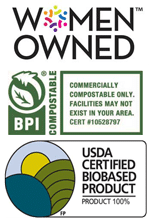How We Save Trees, Plant Trees & Conserve Our Natural Resources
“When we first set out to make paper products without using trees, we had to overcome some huge hurdles. The biggest hurdle was keeping the environment safe from the manufacturing process while producing quality products. Secondly, we wanted the product to be competitively priced in the (tree-made paper) marketplace – with the trees in mind! After years of research, sacrifice, and dedication, we have launched the Green2 tree free paper products line!”
Trees are sacrificed for far too many reasons. However, timber is used for many noble causes, like building a home. The wood is also used for plywood, dimension lumber, shakes, and shingles. The wood could be used as phone poles, fence posts, or railway ties. Depending on the variety, logs might turn into cabinets, furniture, framing, trim, roofing, panels, or floors. The wood might go into toys, tool handles, boats, houses, or hospitals. You might find yourself toasting marshmallows over a crackling wood fire while camping or cooking steaks over the charcoal briquettes on your barbeque.
Trembling Aspen is harvested to slice and sand down into disposable chopsticks. Many other aspen trees and poplars are cut down and then diced into flakes of wood to be glued and heat-pressed into oriented strand boards. Various types of trees are used for wood products, from toothpicks to popsicle sticks and tongue depressors to mop handles. Forests are cut down for resource use; sometimes, they accidentally burn in wildfires, but they are often just slashed so the land can be put to another service.
Logs from forests are digested and turned into pulp. The pulp might then be remanufactured into paper or even more secondary products like the absorbent material for disposable diapers. The wood pulp is also transformed into cellulose acetate for making fabrics like rayon and cellulose acetate tow for cigarette filters. Products made from trees might be in the package and comprise the material for the crates and cardboard cartons it is being shipped in. Then, when it seems they’ve done almost everything possible with a tree, another use materializes.
There are so many important uses for trees; it’s genuinely foolish to waste precious resources on such a non-critical product as paper, especially when top-quality paper can be made without any trees. The forests on our planet have some critically essential tasks to do. The reverse lungs suck in the carbon dioxide and exhale oxygen again. They remove air pollution and work hard to keep global warming down.
Trees hold valuable soil where there would typically be mudslides and knock down the wind in turbulent areas. They provide food, shelter, shade, and warmth. Trees are more important than we sometimes realize! What would we do without Walnut, Apple, Peach, Mango, Coconut trees, etc.? How could we live without valuable fruit trees?
See how we manufacture paper products from sustainable bamboo.
So, what can we all do to help stop the declining forests?
Firstly, reduce, reuse, and renew. Then, follow some of the simple steps that we’ve taken:
A. Use “Green Distribution” Channels
B. Establish A “Give Back Program” – Help Plant More Trees
C. Promote Fair Trade and Local Support
It’s All About Trees and How We Save Trees.

Trees dance, knowing Green2 is saving them by using bamboo.
We appreciate the support and recognition from the Arbor Day Foundation and the Sustainable Urban Forest Coalition.



